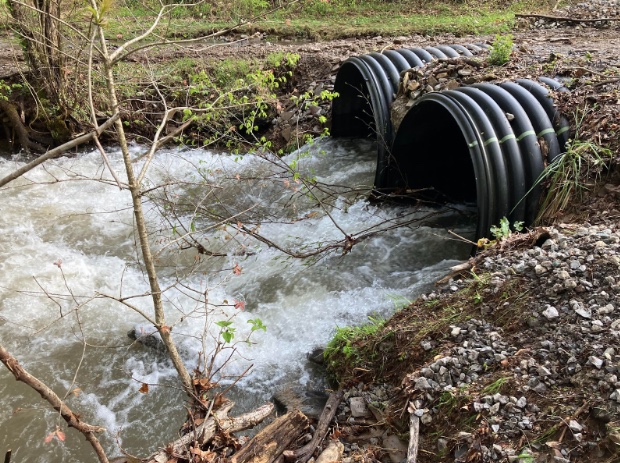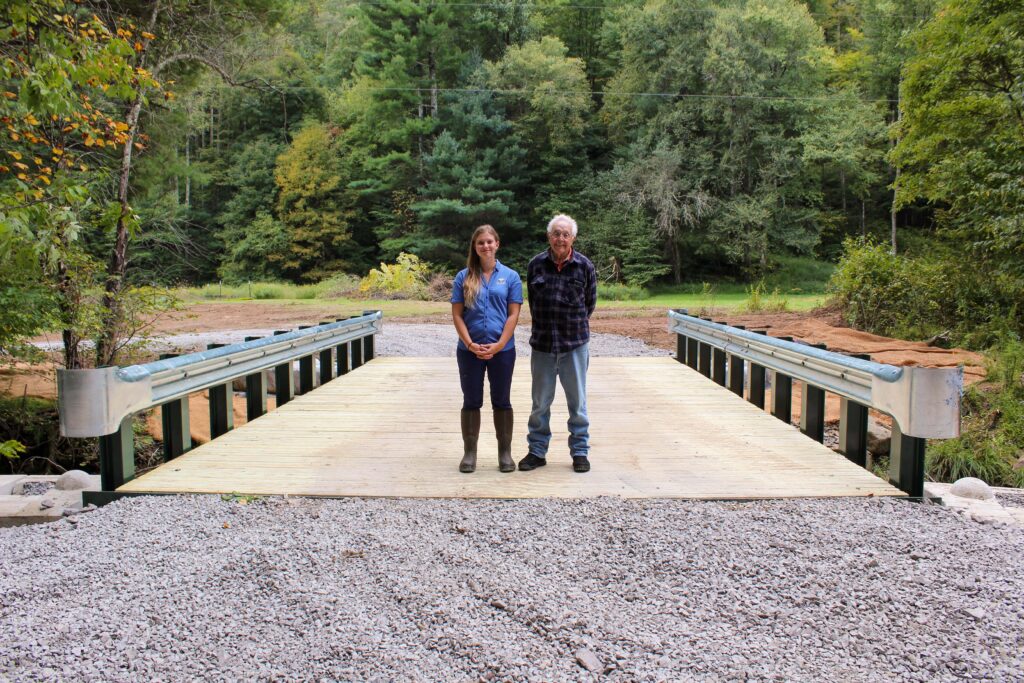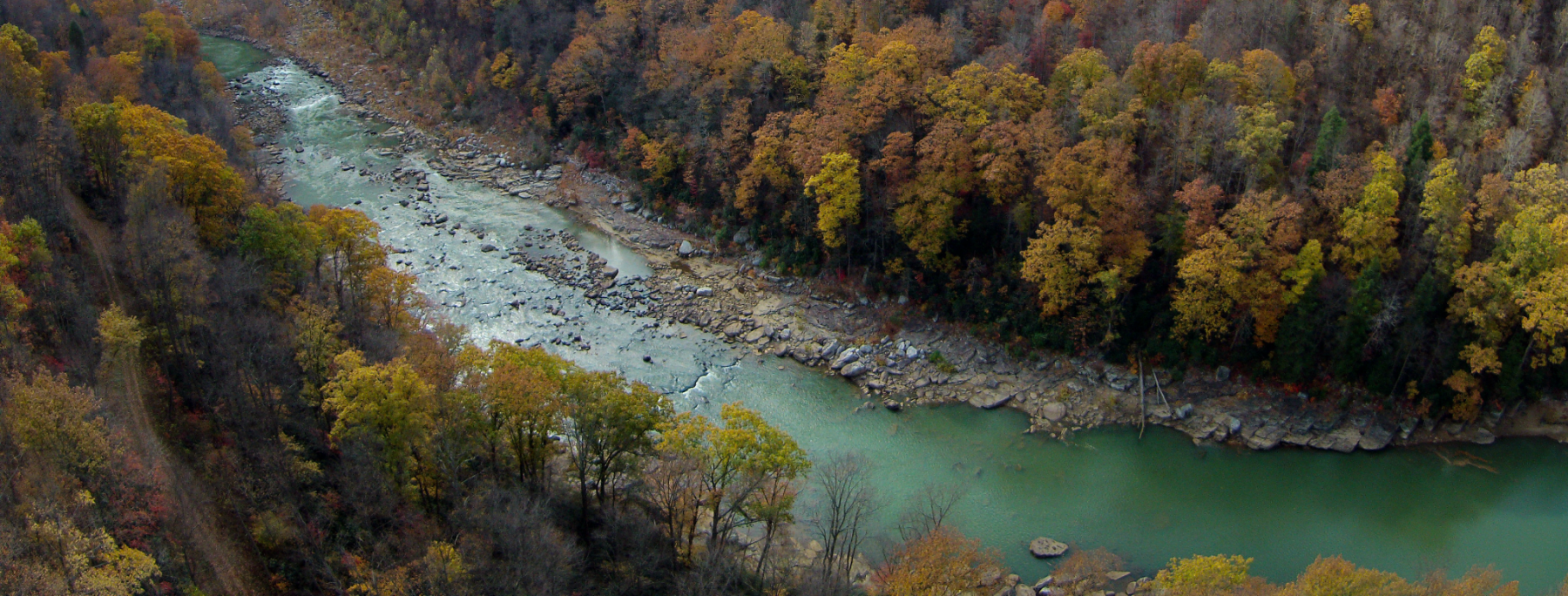
by Madison Ball, Conservation Program Director

“Out of the AMD and into the AOP” is our latest phrase here at FOC. While acid mine drainage (AMD) remediation will always be at the heart of our restoration efforts, FOC has been expanding our work to include new types of restoration. Aquatic Organism Passage (AOP) is a restoration strategy that improves the connectivity of a stream or river system.
Manmade structures such as road crossings, dams, and culverts can act as barriers for aquatic species to move freely in a stream or river, isolating populations from one another or eliminating them from entire reaches.
This can have real consequences for our freshwater species in the Cheat and our tributaries, who may need to migrate long distances to find the best habitat for spawning and feeding, or in the case of brook trout, to find cold water in the peak of summer.
While some stream barriers occur naturally, such as waterfalls, human infrastructure has created a large number of barriers on our streams in a relatively short amount of time, which has impaired and fragmented our aquatic populations. Undersized road crossings can also negatively affect people and landowners, worsening the effects of flooding and causing bank erosion.
Our Conservation Program team had been looking to implement an AOP project on one of our headwater streams but wondered where to start. There are over 9,000 unsurveyed crossings for aquatic organism passage in the Cheat River watershed. Luckily, our staff didn’t have to ponder too hard– the opportunity found FOC.
While conducting landowner outreach for our tree planting efforts in the Upper Cheat watershed, Conservation Program Director Madison Ball was contacted by Mr. Bill Holler, who lived on Indian Run of the Left Fork of Clover Run. Indian Run is a Tier 3 trout stream, which is the highest quality status the state of WV gives to streams, and only assigns this status to streams that have naturally reproducing trout populations.
While working together on the tree planting project, Madison remembers Mr. Holler asking, “Do you think you could help me with this?”
The double culvert driveway was catching material that would come down in annual flooding events each year, causing the flow to erode the banks and route along his driveway.

It also sat perched, meaning that during certain times of the year, fish would not be able to pass from downstream to upstream. Both the WV Division of Highways and the US Forest Service had improved road crossings that were acting as barriers upstream of this location in recent years. If this crossing were to be replaced, all of Indian Run would be reconnected year-round for trout. “I think we could help with that,” I remember responding with a smile.
Nearly two years later, and with the help of funders such as the Appalachian Stewardship Foundation, The Pew Charitable Trusts, the US Fish and Wildlife Service, and partners including AllStar Ecology, Solid Rock Excavating, Canaan Valley Institute, and the WV Division of Natural Resources, the project has been completed, and Indian Run reconnected.
While the survey work, grant writing, and permit acquisition took up the bulk of those two years, the construction of the new bridge itself only took 10 days to complete thanks to our skilled contractors. Over those two years, another bridge was also built, one between FOC staff and Mr. Holler, who has been a wonderful landowner to work with, is the reason this project was even possible and is considered a true friend.

With our first AOP project complete, FOC will continue to grow this program, and has its sights set on working with the Canaan Valley National Wildlife Refuge to reconnect Freeland Run in the coming years, and is working with the US Forest Service to assess culverts for future replacements on public lands. However, rivers and streams don’t follow human-determined property boundaries– if we are to improve the connectivity of our streams and reduce the risk of flooding, working with private landowners will be the key to our success.

